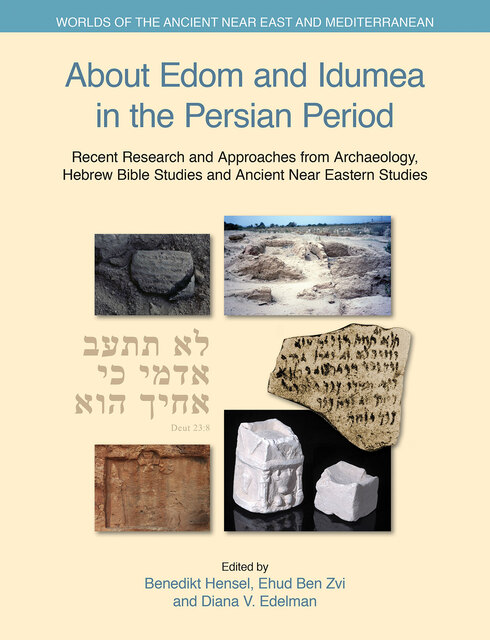Hensel/About Edom, 4. The Evolution of an Edomite/Idumean Identity

Full description
Ian Stern’s essay immediately continues this line of inquiry concerning Idumea and the Idumean province. Stern takes Maresha as an example in his overview, entitled “The Evolution of an Edomite/Idumean Identity: Hellenistic Maresha as a Case Study.” He discusses questions of identity in Idumea in its historical context from Iron Age Edom to the second half of the second century BCE and the conquest of Maresha by John Hyrcanus I. Excavations at Hellenistic Maresha have revealed an eclectic material culture which includes both generic Levantine characteristics such as pig avoidance, ossilegium, circumcision, and even certain aniconic tendencies, as well as features with a distinctly Judean affiliation: ritual bathing facilities and hundreds of punctured vessels that seem to suggest Judean purity laws. In stark contrast, there is an almost total disconnect between Maresha and Judah/Judea in the ceramic repertoire. Ceramic parallels are primarily from coastal Hellenistic-period pagan sites; Phoenician, Greek and Egyptian influences are prevalent as well. This suggests a lack of exchange or perhaps a deliberate policy of boundary-creation with Judah/Judea, or both. This hybridized material culture assemblage would appear to reflect a hybridized group identity – a Maresha/Idumean identity, but perhaps some boundary-making as well.
- typeImage
- created on
- file formatjpeg
- file size301 KB
- container titleAbout Edom and Idumea in the Persian Period: Recent Research and Approaches from Archaeology, Hebrew Bible Studies and Ancient Near Eastern Studies
- creatorIan Stern
- isbn9781800501348 (eBook)
- publisherEquinox Publishing Ltd.
- publisher placeSheffield, United Kingdom
- rights holderEquinox Publishing Ltd.
- series titleWorlds of the Ancient Near East and Mediterranean
- doi
We use cookies to analyze our traffic. Please decide if you are willing to accept cookies from our website. You can change this setting anytime in Privacy Settings.
